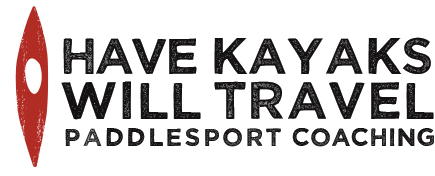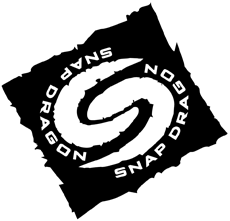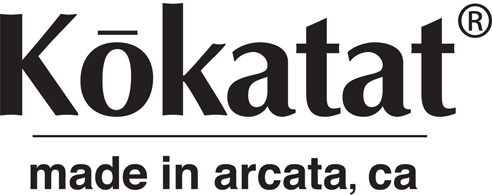This is a bittersweet morning. We’re packing the car and trailer and waiting for Robert to see us off before we head up to Ontario. It’s been a great week; it’s hard to say goodbye.There are so many thing we haven’t written about: the rescue class, the rolling class, casual paddles in the Chester River, the presentation we gave about Great Lakes paddling opportunities, Jeremy and Noah flying kites, a day trip to Cape Henlopen State Park, and more.But we can’t leave before writing a little bit about Hannah’s role during our time in Queenstown. She co-taught the “women on the water” class, bringing to it her playful spirit and her remarkable ability to work with all kinds of people. Her paddling skills are good enough that she can provide clean demonstrations, clear explanations and helpful critiques (essentials of kayak instruction), but that’s just the beginning. She can also inspire and motivate students with her enthusiasm and knack for saying just the right thing at just the right time. And she’s fun. Hannah demonstrating the solid support provided by rafting up. Lest things get too serious, Hannah gets students to practice their strokes while sitting on their back decks. When she wasn’t teaching, Hannah was either paddling around with Noah sitting on her back hatch, chatting with Kerrie, or practicing guitar. But when the opportunity arose to teach more, she took it. Robert was providing a kayak program at a local camp four mornings this week. Hannah went along to help, bringing to the campers her same set of paddling and people skills.It’s delightful watching her evolve as both a paddler and an instructor. She’ll no doubt be both proud and a little embarrassed about this post, but we had to write it. No iPod Left Behind: Hannah shares her playlist with...
taking risks, earning rewards
Robert, Kerrie and Noah Schrack. We’ve been meaning to write a little bit about our hosts, Robert and Kerrie Schrack. It’s a daunting task because they’ve been so generous and impressive on so many fronts. So this post will attempt to address what’s been missing from previous posts: some sense of who brought us here. Robert and Kerrie are the owners of Adventure Crafters in Queenstown, MD. They have a small but impressively stocked pro shop and offer classes and trips. Check out their website at www.adventurecrafters.com. Robert and Alec met during their Instructor Certification Exam at Sea Kayak Georgia, one of the premiere places for sea kayak training. They’re both natural athletes and generous spirits, so they hit it off immediately. Adventure Crafters is in its second year here in Queenstown, after a year and a half or so in Westchester, PA. Robert traded in his landscaping business to invest full-time in kayaking, with Kerrie assisting him in everything from running the shop to leading the evening paddles. It’s an impressive balancing act: work and family, time on water and time running the business, making a living and being true to their values. They’re walking all those tightropes admirably. We’ve been staying with them for almost a week now, sharing meals, teaching classes, messing around on the water, hanging out and sharing stories. We’ve met an assortment of the students they attract, who seem to share the down-to-earth, honest spirit that Robert and Kerrie bring to their business. It’s been a great pleasure to see this small, family business in its early stages and help for one short week. One of the hazards of teaching and guiding full-time is that you rarely get to go out and paddle for fun, and when you do, you usually do so alone. This evening, we paddled out with Robert into a pretty stiff head wind until the darkening clouds grew a little too ominous. We surfed back home to the sounds of thunder, looking over our shoulders at some very dramatic skies. As we approached Eastern Neck Island, we saw sheets of raining pouring down from the clouds ahead of us. Almost back in safe harbor, the waves subsided and we knew we had outpaddled the storm. It seemed an apt metaphor for what makes anything in life meaningful. Often you have to take a risk to gain a reward. Whether it’s a stunning sky, an exciting ride or a meaningful life, you have to take some chances. We’re awfully glad that Robert and Kerrie took a chance on Adventure Crafters and included us in their...
Lost and found
Alec demonstrates proper hand position–and paddle balancing skills. Yesterday, we led a three-hour tour semi-officially titled “getting lost with the out-of-town instructors.” We were to lead a small group on local waters, identifying flora and fauna and sharing local knowledge. Robert and Kerrie helped us file our float plan and suggested a few routes appropriate to the group and conditions. Then Kerrie went to get our three participants, leaving us to prepare our boats and gear.As soon as she was safely out of view and earshot, we confided to each other that while we felt confident with our navigation skills and our ability to safely shepherd three novice paddlers up and down Queenstown Creek, we have an almost pathological inability to remember the names of plants and animals and those things with fins or shells that live in the water. We call these conditions “floraphasia,” “faunaphasia” and “pescophasia.”Fortunately, we were able to keep our categories straight. We agreed that most of the living things on land that don’t move and aren’t man-made are plants, that creatures with wings that fly or sit in nests are generally birds or insects, and that most of the moving stuff in the water is marine life. Feeling much more confident, we awaited our hapless participants.As it turns out, we got lucky in a variety of ways. While our three participants were interested in nature, they were far more excited about being on the water than in identifying plants and animals. We had a great time poking into coves, discovering methane in a marsh, and running into a rare Maryland alligator. (It turned out to be a log.) Alex comes nose to nose with a rare Maryland Alligator. We accurately identified several bald eagles and found some of their nests. We even had time to stop on a sand spit, where our guests were delighted to find several colors of sea glass and helped us rescue three stranded horseshoe crabs. Sharon looks for beach glass while the tour participants compare their finds. It was a lovely morning, and all of us went away happy.In all seriousness, we had been a bit nervous that morning. We weren’t sure how well we would be able to guide a trip in an unfamiliar location, so we focused on what we felt were our weaknesses. That could have blinded us to what our guests actually wanted, which was an opportunity to enjoy being on the water together.We think it’s quite natural, when preparing for any class or a trip, to worry about whether you’ll do the best possible job. We typically brainstorm ideas, make an outline, write it down, worry about whether we can pull it off, make...
Why a women’s class?
Most classes begin with individual boat fit so that students feel comfortable in their kayaks and can control them well. Saturday’s “women on the water” class was, in many ways, typical of other all-female classes I’ve taken and taught. The participants ranged from timid to almost fearless, from novice to intermediate, from goal-oriented to open-to-anything. But what they all had in common was this: They wanted to learn in a supportive environment where nobody would judge them, and that’s what an all-women’s class meant to them.It’s funny, when you think about. Are women any less judgmental than men? Not necessarily. But they often are more supportive of one another, particularly when they are overcoming their fears and gaining new skills. In a mixed gender class, you’re less likely to see a spontaneous round of applause after someone screws up her confidence and finally attempts a scoop rescue on a fellow paddler. You’re more likely to see a someone hanging back and watching instead of trying new skills. But in a women-only class, there’s a lot of encouragement and positive reinforcement. Students root for each other and celebrate each other’s accomplishments. It’s a case of gender camaraderie at its best.Our Saturday class began with two students refusing to do a “wet exit.” One saw no need; the other was afraid. Sizing up the conditions (warm water and air, calm seas, no spray skirts), I hastily devised the “modified wet exit,” in which I would hold the student’s hands while she flipped her boat and came out. Both students agreed to do this and executed it easily, proving to themselves and to me that they would come out of their boats if they accidentally capsized.By contrast, one student came to class with the wet exit high on her list of desired skills. She had never done one and was a little afraid she wouldn’t be able to. After she pulled one off, she was ecstatic, and kept doing it over and over just to reinforce the skill. Her pride was infectious; the excitement of the whole class ratcheted up several notches.The rest of the class entailed a mix of teaching and playing, with the games reinforcing the skills. For example, after teaching turning strokes and draw strokes, we played kayak basketball, in which students attempted to toss tennis balls into each other’s cockpits. When they missed their targets, they had to retrieve the balls from the water by using the strokes they had learned. The beauty of doing this through games is that the stroke practice happens naturally. The students laugh and focus on what they’re trying to accomplish. The paddle skills are no longer an end, but a means to...
With confidence comes competence
Aht came to class determined to learn a wet exit and how to stop her boat so she wouldn’t crash into things. She quickly gained those skills and moved on to turning strokes, draw strokes and kayak tag. We got a leisurely start yesterday. Robert cooked us a hearty breakfast of hash browns, pancakes and vegetarian sausage (with help on the pancakes from Jeremy) and we finalized our class plans. By 11 a.m., Robert, Dan (who is working for him), Alec and Sharon were out on the water practicing some ideas for teaching the rolling class. Sharon and Hannah also mapped out the women on the water class, which is essentially a two-star training with a heavy infusion of games and an accommodation to some of the issues and competencies particular to women. (More on that later.)At 1 p.m., the launch area was awash in boats and students. There was a palpable sense of excitement and a little bit of nervousness. Beginners, in particular, often feel a combination of eager anticipation and fear. They’re attracted to kayaking—that’s why they’re taking a class–but they’re not sure what’s expected or how well they’ll do, and some of them are worried about everything from looking foolish to drowning.A little fear is a good thing. We want people to take seriously the risks associated with paddling. Too much fear, however, is stifling. In nearly every class, there’s at least one student whose fears prevent him or her from taking on the challenges that build skills. Often, the “wet exit” is the first obstacle. This is maneuver used for getting out of a capsized kayak. We teach it methodically: when you’re upside down, slap the sides of your boat three times, then bring them to your cockpit coaming; slide your hands forward, push the grab loop on your spray skirt forward, then pull it back to release the skirt; loosen the skirt all the way back, then place your hands about hip-position on your coaming; push with your arms and come out of the cockpit as though you’re taking off a pair of pants; hold on to your boat and your paddle.The truth is, most students are able to do a wet exit with little or no instruction. They may not slap the side of the boat. They’ll probably lose the paddle. It definitely won’t be pretty. But they won’t drown. Once they know they can wet exit, they’re ready to learn to do it with less panic and loss of equipment. And once they’re over the fear of capsize, they’re willing to take on other risks that allow them to build their skills as paddlers.Too little fear, by contrast, is dangerous. A student...
a long journey into night
Ready to roll, literally. We didn’t manage to break our record of never quite getting on the road as early as we intended. Still, we were crossing the Skyway shortly after 7 a.m. There’s something morbidly attractive about the view from the bridge—a gritty, industrial landscape that somehow evokes a feeling of might along with an awareness of pollution. The gritty, industrial view from the Chicago Skyway. Google Maps promised us a 12-hour journey. Apparently, nobody at Google headquarters stops for bathrooms or ice cream. I’m sure they also don’t base time estimates on 11-year-old, four-cylinder Honda minivans loaded with gear and pulling trailers holding eight kayaks. For us, it was a 14-hour journey.But it’s so easy to keep everyone entertained these days. When the kids were little, we plied them with toys and read them books (and also stopped every hour or two). When they were in elementary school, we discovered books on tape. Now we’re a mobile media unit. We plug an inverter into the cigarette lighter and power two laptops. Jeremy spent much of the trip writing a program for a line-following robot on one. Alec and I took turns watching a kayak DVD and writing on the other. And Hannah alternately listened to her iPod and caught up on her sleep. We rolled in around 10 p.m.750 miles later, we’ve arrived at Adventure...
Ready or not….
It’s just after 10 p.m. Eight boats are strapped to our trailer. We’ve packed our gear bags and paddles, our kayaking and camping gear, our books and clothes, our food and espresso pot. Our 1997 Honda Odyssey is ready to put all four cylinders into pulling our trailer and hauling all of us east to Maryland, north into Ontario, and back home again–a journey that easily makes up for the lack of miles we put on our car during the rest of the year.Here’s the plan: We leave early tomorrow morning (we’re aiming for 5:30 a.m.) and arrive in Queenstown in the early evening. We’ll be teaching at Adventure Crafters for two or three days. On Saturday, Sharon & Hannah will be teaching a women’s paddling class while Alec & Robert teach a rolling class and Jeremy rides his unicycle and flies his kites. On Sunday, Alec & Sharon will teach a rescues class while Hannah, Jeremy & Robert teach a kids’ class on playing in your boat. On Monday or Tuesday we’ll head to the ocean to play in the waves with Robert, Kerrie & Noah. At some point, we’ll return to Queenstown so Robert & Kerrie can get some work done. We’ll leave them on Friday and head up to Ontario to visit relatives near Ottawa for a couple of days, then head over to Madawaska Kanu Center, where the kids will take a five-day whitewater course and Alec & Sharon will camp, hike, paddle and hang out.We’ll try to post blog entries daily and include photos as often as we can, Internet access permitting. But right now, we’d better go to...







